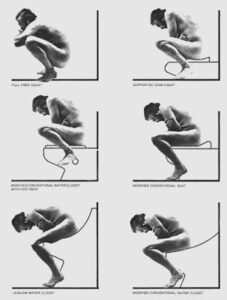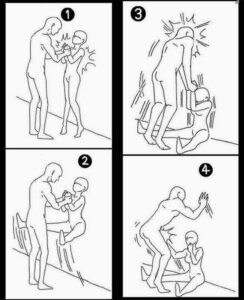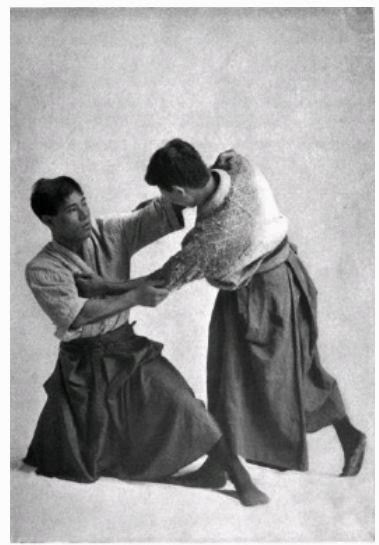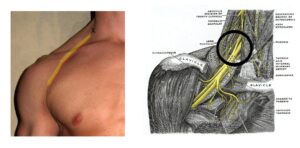Today’s blog will be a short one, but it will cover a couple of useful and interrelated ideas, all to do with water.
If you find a source of water, the chances are that it will not be too clean.
All sorts of mud, dirt and grit may be floating in it and the organic components will affect the efficiency of chemical purification methods you may employ.
One solution is to use a cloth bag to filter the water through.
I have even seen it suggested to use a spare pair of trousers. Tuck one leg into the other to form a double layer and then tie a knot in end of the leg(s).
seen it suggested to use a spare pair of trousers. Tuck one leg into the other to form a double layer and then tie a knot in end of the leg(s).
Hang this up and pour water through so that it drips into a container.
In a long term camp, the filter can be packed with sand and straw etc.
Note that the water produced will be clearer, but cannot be considered to be safe until it has been boiled or chemically treated.
 A variation of the above is the wick method. Fill a container with your crude, suspect water and place an empty container lower down. Connect the two with a strip of cloth such as a bandanna and allow capillary action to do its thing. This may work with other materials such as paper or string. Experiment.
A variation of the above is the wick method. Fill a container with your crude, suspect water and place an empty container lower down. Connect the two with a strip of cloth such as a bandanna and allow capillary action to do its thing. This may work with other materials such as paper or string. Experiment. This method is a lot more economical on materials. When your wick becomes too dirty wash it or discard it.
Note that while the water produced will appear clearer it cannot be considered to be safe until it has been boiled or chemically treated.
A third method I was taught to call an Indian Well.
We have all seen the movies when the protagonists get to a water hole and it is all muddy. “Oh no!” they cry.
What they should do is start digging a hole near the shore of the waterhole or river.
If the ground is too hard for your hands find an object you can use as a digging stick. A tent peg, tire iron, even a stick!
The hole should be about half a metre across and deep.
Since you have dug down into damp ground the hole will begin to fill with water.
Poke a few holes in the side of the hole and it will fill even quicker.
The water will probably look muddy and still something you do not want to drink.
Using your hands, a bark scoop, tin can or anything else you have handy, bail out the water and cast it onto the ground nearby.
Eventually the water coming through should become clearer. Leave it a while and more material will settle out.
The water will still need to be filtered further and boiled or treated.
This is not the fastest method of getting cleaner water but does have the advantage that you can use it when not near an obvious water source. Just dig down into damp ground.
Obviously, digging at a low point will be more productive than a hilltop.
The Boy Scout Handbook (1911) tells us that an Indian Well should be several feet from the water source, twelve inches across and six inches below the water level.
Empty by bailing at least three times before considering using the water.
Our fourth method is useful for sunnier locations such as the desert, but may work elsewhere.
Take two bottles, glass or plastic. Clear is good but if both are opaque use the darker coloured one for the “crude” water.
Partially fill one bottle with untreated water and tape the necks of the two bottles together.
Since we are in the desert we will assume you have a vehicle nearby (working or not) and it has some tape in the tool kit. (don’t go to places like the desert without a tool kit and other essentials in your vehicle!).
If you have a suitable tube, use this to connect the two bottles rather than taping them neck to neck.
Find a slope or pile of sand, Select the side that will get the most exposure to the sun (the south in the northern hemisphere).
If the bottles were taped directly together, lay the two bottles on their sides and bury the empty one in the side of the slope, leaving the one with water exposed to the sun.
Let nature take its course.
The water in the outside bottle will be heated and evaporate. Being in a closed system it will pass into the interior of the buried bottle and the drop in temperature will cause it to condense.
After a while, the buried bottle will contain drinkable water which can be collected if you take the apparatus to pieces carefully.
If you had a suitable tube, you could have run this into the collection bottle when you constructed the device.
If you paid attention in school, you will recognise this method as distillation without the need for Bunsens and heatproof glassware.
The source water you used could have been urine and the produced water would still be safe to drink.

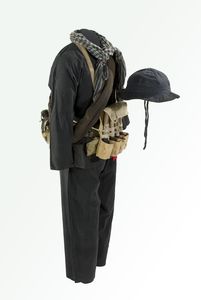 you can see them wearing a tube-like item that resembles a thin blanket roll. This would be made of silk, cotton or even from a bicycle inner tube and carried the fighter’s rice ration.
you can see them wearing a tube-like item that resembles a thin blanket roll. This would be made of silk, cotton or even from a bicycle inner tube and carried the fighter’s rice ration. 


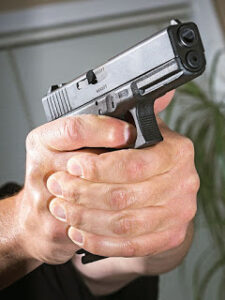
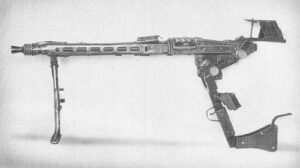

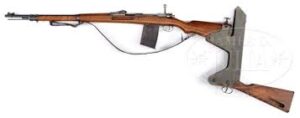
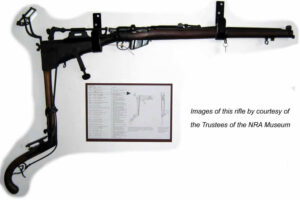


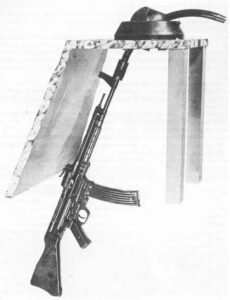



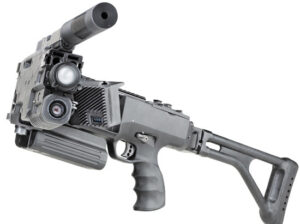
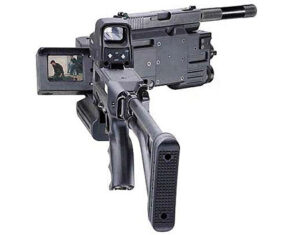
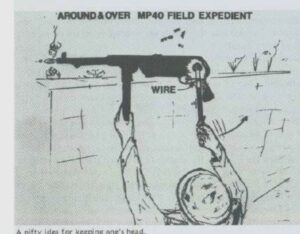
 seen it suggested to use a spare pair of trousers. Tuck one leg into the other to form a double layer and then tie a knot in end of the leg(s).
seen it suggested to use a spare pair of trousers. Tuck one leg into the other to form a double layer and then tie a knot in end of the leg(s).  A variation of the above is the wick method. Fill a container with your crude, suspect water and place an empty container lower down. Connect the two with a strip of cloth such as a bandanna and allow capillary action to do its thing. This may work with other materials such as paper or string. Experiment.
A variation of the above is the wick method. Fill a container with your crude, suspect water and place an empty container lower down. Connect the two with a strip of cloth such as a bandanna and allow capillary action to do its thing. This may work with other materials such as paper or string. Experiment. 
